The History Behind Regional Hot Dog Styles Around The Country
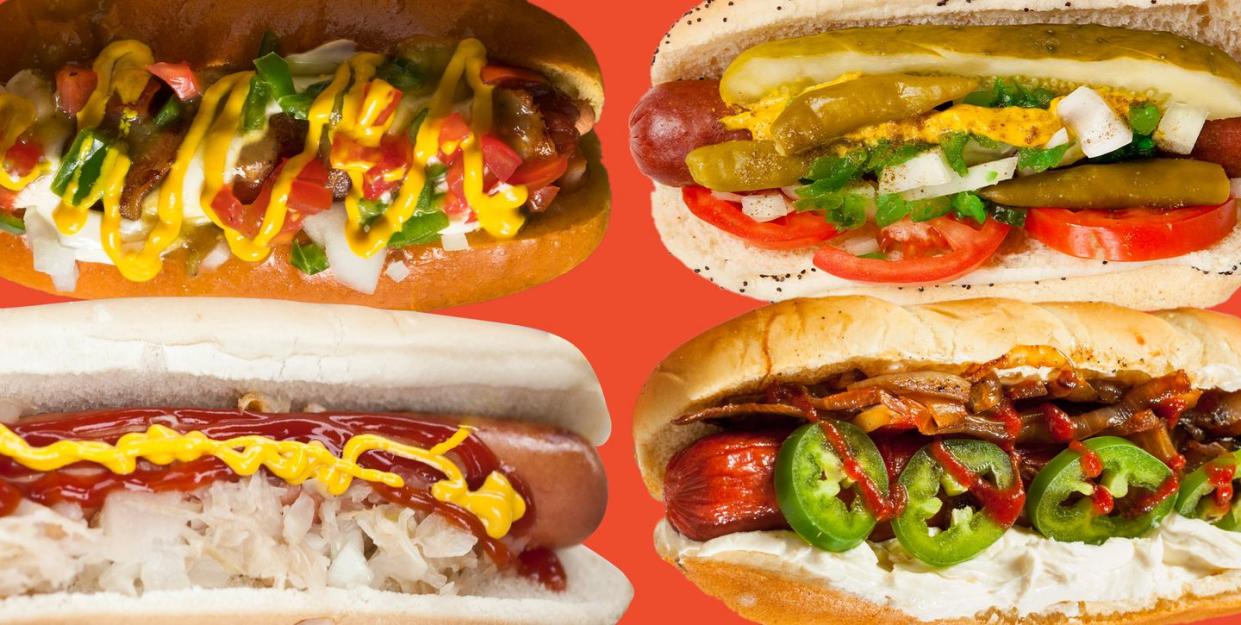
"Hearst Magazines and Yahoo may earn commission or revenue on some items through the links below."
The hot dog may be one of the most popular foods in the United States, especially in the summer. And while many of us are most familiar with the standard version you might see at a baseball game, there are many variations out there. From coneys and Chicago dogs to Sonoran dogs, many regional styles have developed and thrived around the country through a mix of culture, place, and pride.
Every year on the Fourth of July alone, Americans eat about 150 million hot dogs, according to the National Hot Dog and Sausage Council. What better way to celebrate than to explore some of the most popular hot dog styles with a hot dog expert? So I got in touch with Bruce Kraig, Professor Emeritus in History at Roosevelt University in Chicago and the author of Man Bites Dog: Hot Dog Culture in America and Hot Dog: A Global History. "You can put anything on a hot dog," Kraig told me. "It's a platform for culture and also experimentation."
While this is by no means a comprehensive list of hot dog styles, it'll definitely make you crave a hot dog—and might even push you out of your hot dog comfort zone.
Chicago Dog
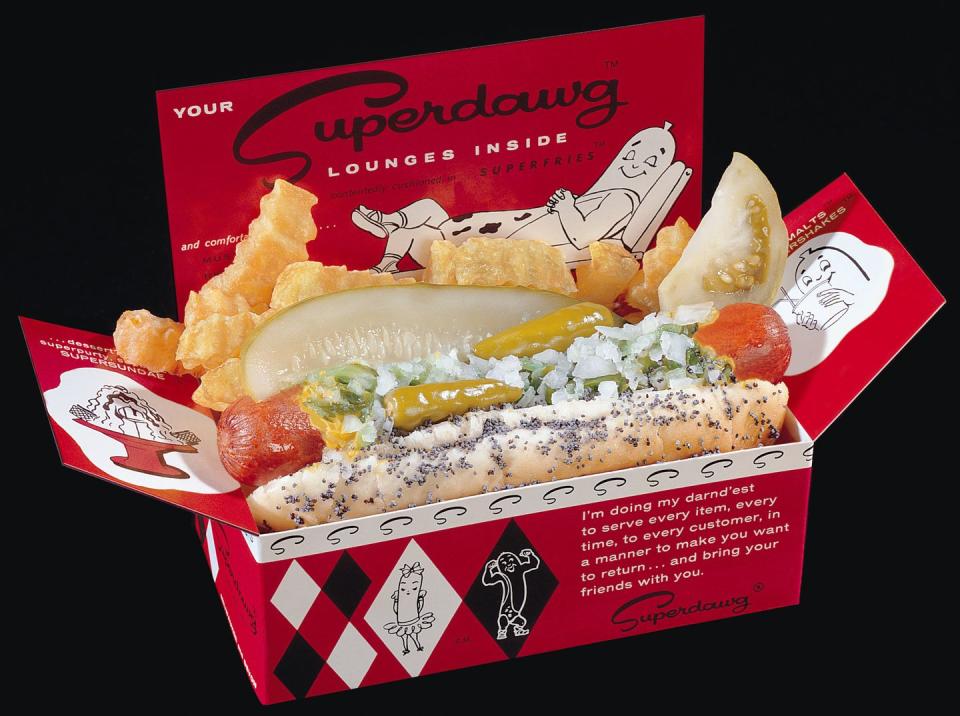
The Chicago dog, or Chicago Red Hot, is loaded with toppings. So much so that people say it's been "dragged through the garden." It's the perfect balance of sweet, sour, hot, and salt, according to Kraig.
Held together in a poppyseed bun, an all-beef hot dog is topped yellow mustard, bright pickle relish, white onions, dill pickle spear, sliced tomatoes, sport peppers, and a bit of celery salt. And, of course, no ketchup. "A Chicagoan wouldn't put ketchup on a hot dog, and the reason is it destroys the balance of it in terms of flavor and texture," said Kraig. "It's a specialized thing with balance, and ketchup would kill it."
However, there are variations. At Superdawg Drive-In they add pickled green tomato and leave out the celery salt. The family-owned business opened its doors in 1948, when many GIs returning from WWII were starting hot dog stands, and has been serving up its Superdawg ever since.
Coney Island

No, they’re not from Coney Island, Brooklyn. They actually originated in southeast Michigan in the early-20th century. According to the book Coney Detroit, immigrants, mostly from Greece and Macedonia, passed through Ellis Island on their way to Michigan. They borrowed the word Coney from the famous amusement park to name a natural-casing hot dog in a steamed bun topped with bean-free chili sauce, diced white onions, and yellow mustard.
Detroit's American Coney Island and Lafayette Coney Island are two of the earliest and most well-known coney spots in Michigan, both for their dogs and family drama. Originally one restaurant, it split into two after the founders, two brothers, got into an argument.
There are plenty of variations on the classic coney. Flint and Jackson-style coneys are known for a much drier chili, some made with beef heart.
Kansas City Dog
When you can't decide between a sandwich or a hot dog, try a Kansas City dog. A sausage gets topped with brown mustard, Swiss cheese, and sauerkraut, almost like a reuben sandwich. And if you're wondering whether the city's hot dog has anything to do with its famous barbecue, yes, a lot of places top it with barbecue sauce.
New Jersey
According to Kraig, New Jersey is home to six different hot dog variations, including Italian Dogs, Rippers, and Texas Wieners.
Newark's Jimmy Buff's is the home of the Italian Dog, which was invented in 1932 by James Racioppi, a.k.a. Jimmy Buff. A hot dog is placed in thick pizza bread and topped with sautéed peppers, onions, and potatoes. The Ripper was invented at Rutt's Hut in Clifton in 1928. The hot dog is deep fried, causing the casing to rip—hence the name.
New York
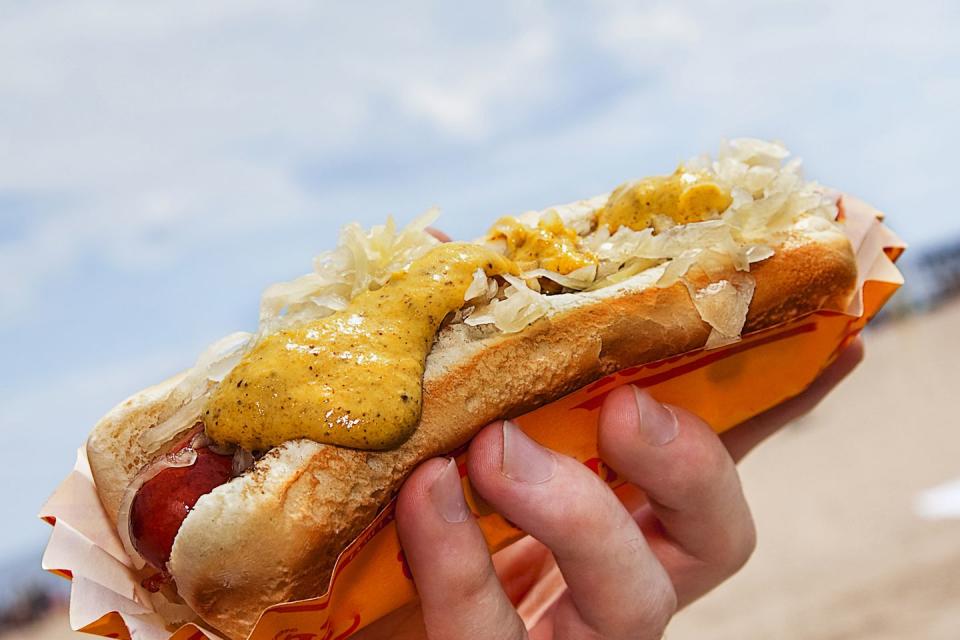
When you imagine a New York City hot dog, you probably think of the thousands of food carts serving "dirty water dogs." You might also think of Nathan's Famous and Papaya King, which are practically city institutions with their own variations and quirks. The classic New York dog is served with onions and mustard and, if you want it, sauerkraut. Some spots will offer a tomato-onion condiment that, according to Man Bites Dog, was created in 1923 by Greek immigrant Gus Poulos, who would later open Papaya King.
Seattle Dog
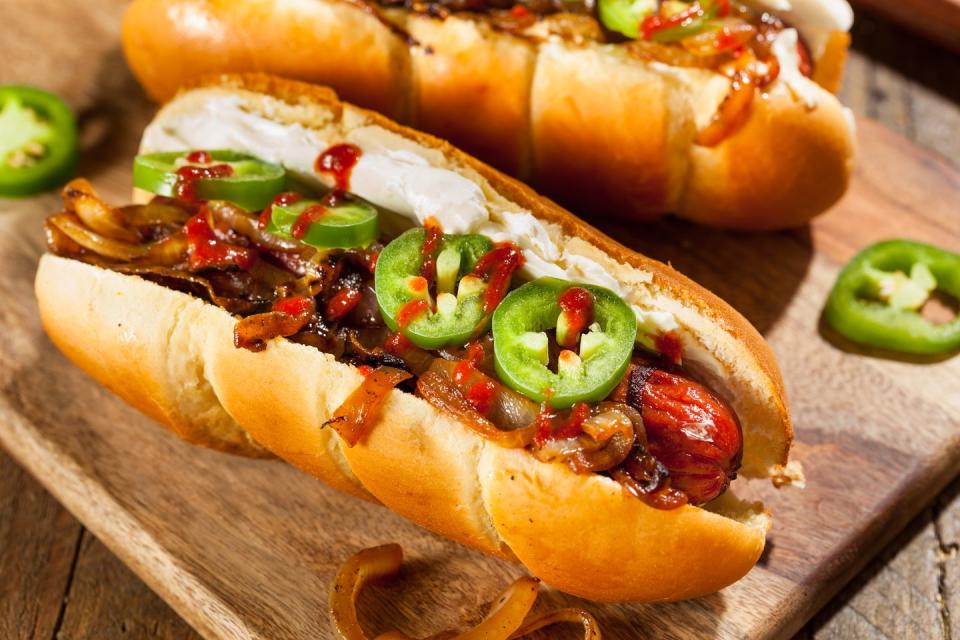
Why only put cream cheese on bagels when you can slather it on a hot dog? It's the perfect solution to the "should I eat breakfast or lunch?" conundrum (and probably a pretty good hangover cure). In a Seattle variation, cream cheese and grilled onions top a hot dog along with other toppings like jalapeños.
Slaw Dog
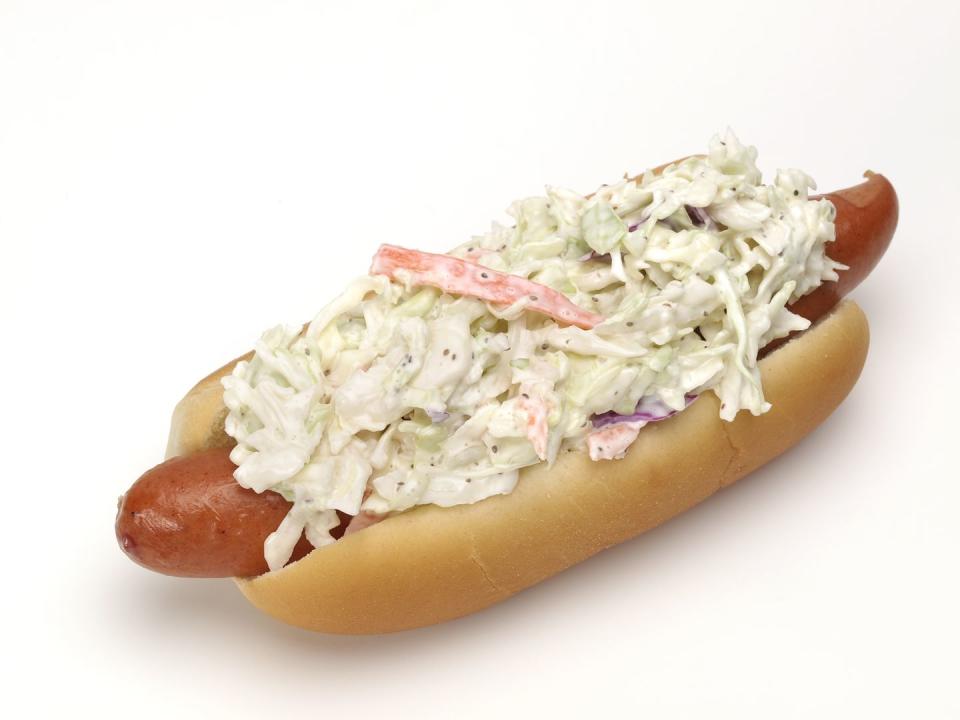
Found throughout the South, the slaw dog is topped with, you guessed it, coleslaw. Other condiments include chili and mustard.
Sonoran Dog
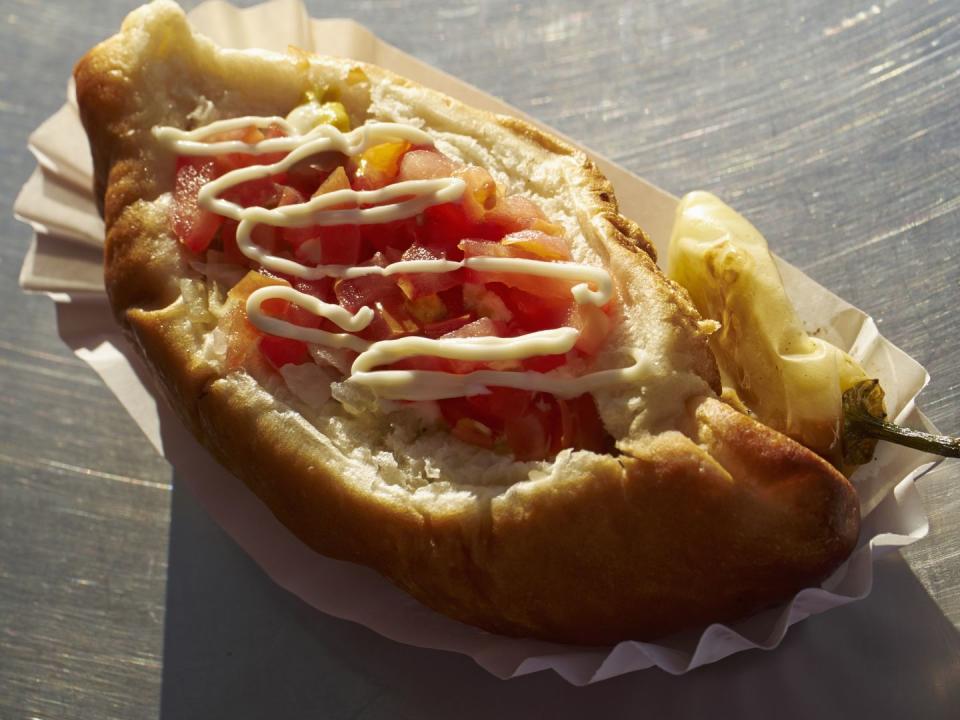
Popular in California and the Southwest, the Sonoran dog most likely originated in Hermosillo, a city in the Mexican state of Sonora, and arrived in Arizona in the 1980s, according to Kraig. The bacon-wrapped hot dog has a variety of toppings, like pinto beans, tomatoes, onions, mayo, cheese, and salsa. In Los Angeles, it may be referred to as a "danger dog." Kraig said this name stems from the idea that the bacon was maybe not cooked all the way, or was left outside in the sun for too long, which could cause costumers to get sick.
You Might Also Like

